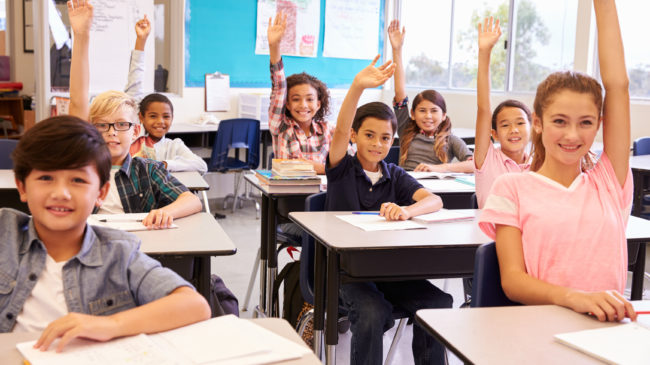The COVID-19 pandemic and its economic disruptions are wreaking havoc on our schools, with many facing threats to their short- and long-term funding. And while some governments have decided to keep funding public schools at last year’s levels, private schools that lose students aren’t as fortunate.
Although states like Oklahoma and North Carolina have directed some COVID-19 relief to private schools, for many, it hasn’t been enough. And despite the stereotype of private schools — that they’re affluent places of wealth and privilege — those worst-hit by COVID-19 have often been modestly priced and serving large numbers of low-income kids.
The Cato Institute reports that 117 private schools have been forced to close permanently due to COVID-related reasons since the pandemic began. Ninety-eight of these have been Catholic schools, where the average annual fees are just $8,000, in contrast to the $15,000+ per pupil that taxpayers spend on U.S. public schools.
Despite that disparity, a 2018 study found that high school students attending these Catholic schools had higher grades, were more likely than average to graduate, and were more likely to graduate with a STEM (science, technology, engineering, and mathematics) degree — effects observed across subgroups including non-white and low-income students.
And while students forced to exit these schools suffer, so too will public schools that will soon be stressed by an influx of students. If even half the students attending the schools that have shut down so far enroll in their local public school, then new costs to the system would exceed $140 million. This comes at a time when state education revenues, typically from downturn-sensitive sources like sales and income tax or energy revenues, are depleting rapidly. If the 2008-09 recession is any indication, then schools and students in low-income or low-property-wealth neighborhoods are likely to suffer most from budget cuts in the years to come.
But it doesn’t have to be this way.
If the United States wants to learn from a place that dealt successfully with a similar need to change the way it funds schools, then it need only look across the pond — to my native Australia.
In the post-war baby boom years, Australia’s public and Catholic school systems found themselves under increasing strain due to enrollment spikes. While wealthy private schools thrived by charging tuition to parents, Catholic schools primarily educated students from low-income backgrounds, like many in the U.S. do today, and found themselves near collapse.
Realizing that the resulting influx of children in public schools could prove disastrous, the Australian government decided to subsidize private schools based on the number of students they served and the capacity of schools to meet their needs through charging fees or receiving donations.
Nowadays, over a third of all Australian students attend private school, significantly higher than most other developed nations, and over three times the proportion of U.S. students attending private school.
Contrary to the claim that school choice policies exacerbate inequity, Australia is actually far more equitable than most developed countries, when considering the effect of a student’s socio-economic status on educational outcomes and academic performance. It’s even more equitable than some top-performing education systems like Singapore’s.
As for claims that expanding school choice would deprive public schools of much-needed funds, 86 percent of Australian public school parents surveyed in 2019 reported that their child’s school was at least adequately resourced. And a majority reported that it was well or very well resourced.
But while all this bolsters the case for expanding school choice, Australia can also teach the United States what not to do. Modifications to government funding models for schools since 2001 have often been accompanied by guarantees that fund private schools at at least their inflation-adjusted pre-reform levels. Such provisions that hold schools “harmless” cause inequitable distortions in the system by short-changing schools with historically lower funding levels, and amount to the government arbitrarily picking winners for political reasons rather than student need. Notably, U.S. states like Missouri have applied similar guarantees for public school districts. These guarantees short-change low-income students or those in less wealthy districts.
Other issues in Australia include the use of faulty metrics, like a private school student’s zip code, to determine their parent’s capacity to pay private tuition to their school, and the delegation of funding to non-government agencies overseeing multiple private schools that then distribute funds to schools using their own models instead of the federal government’s needs-based one. Such agencies, including state Catholic school associations, have been accused of disproportionately funding wealthier schools.
While Australia’s funding system for private education is far from perfect, it nonetheless offers the United States lessons that could improve equity and opportunity for struggling students and families nationwide and provide a lifeline for well-performing schools that serve low-income kids amid the COVID-19 crisis.
But benefiting from these lessons wouldn’t require a radical overhaul of school finance systems. Expanding existing school choice programs, such as Florida’s tax credit scholarships or Arizona’s Education Savings Accounts, to more states and their eligibility to more students would deliver the same benefits. It’d also avoid the flaws in Australian school finance systems by funding families and students directly rather than private school associations.
A version of this column first appeared in Townhall.

